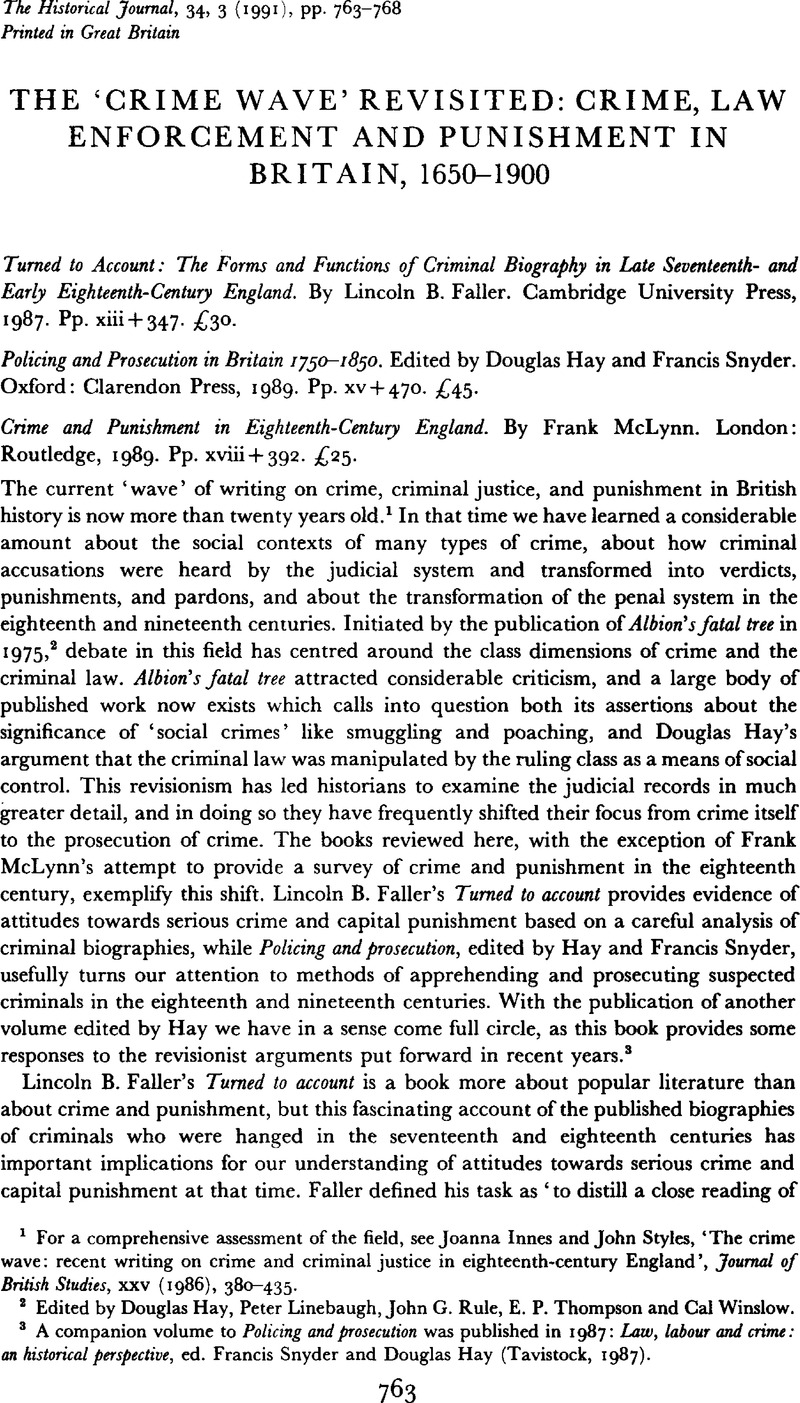Article contents
The ‘Crime Wave’ Revisited: Crime, Law Enforcement and Punishment in Britain, 1650–1900
Published online by Cambridge University Press: 11 February 2009
Abstract

- Type
- Review Articles
- Information
- Copyright
- Copyright © Cambridge University Press 1991
References
1 For a comprehensive assessment of the field, see Innes, Joanna and Styles, John, ‘The crime wave: recent writing on crime and criminal justice in eighteenth-century England’, Journal of British Studies, XXV (1986), 380–435CrossRefGoogle Scholar.
2 Edited by Douglas Hay, Peter Linebaugh, John G. Rule, E. P. Thompson and Cal Winslow.
3 A companion volume to Policing and prosecution was published in 1987: Law, labour and crime: an historical perspective, ed. Snyder, Francis and Hay, Douglas (Tavistock, 1987)Google Scholar.
4 Linebaugh, Peter, ‘The Ordinary of Newgate and his Account’, Crime in England 1550–1800, ed. Cockburn, J. S. (London, 1977), p. 257Google Scholar.
5 Beattie, John, Crime and the courts in England 1660–1800 (Princeton, 1986), p. 589Google Scholar (comparison of execution rates in Surrey [with a large urban population] and Sussex).
6 Herrup, Cynthia B., The common peace: participation and the criminal law in seventeenth-century England (Cambridge, 1987)CrossRefGoogle Scholar.
7 Langbein, John, ‘The criminal trial before the lawyers’, University of Chicago Law Review, XLV, 2 (1978), 277–84Google Scholar.
8 Innes, and Styles, , ‘The crime wave’, pp. 420–30Google Scholar.
- 1
- Cited by




